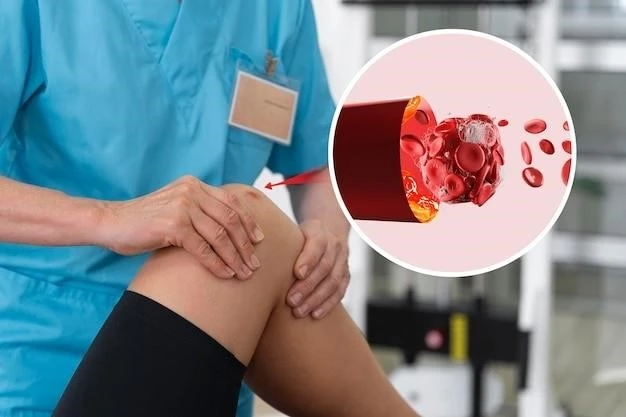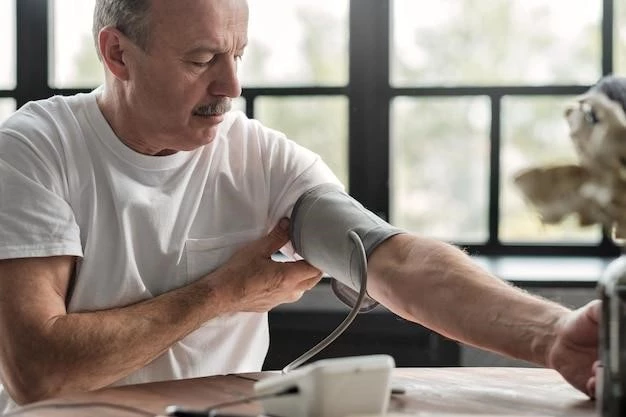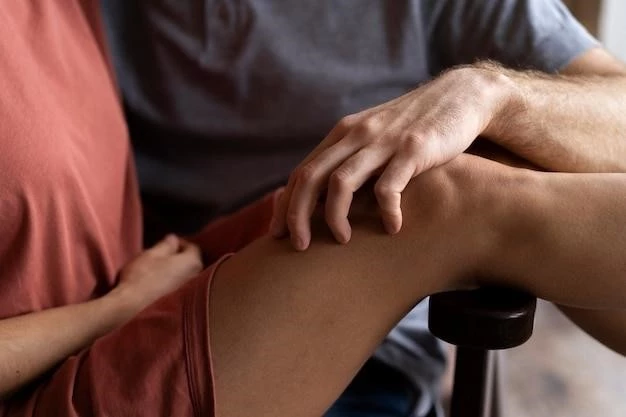Introduction
Muscular dystrophy limb-girdle type 2B٫ also known as Myoshi type٫ encompasses a spectrum of muscle diseases characterized by progressive weakness and muscle wasting․ This condition is attributed to mutations in the dysferlin gene٫ leading to significant muscle involvement primarily in the pelvic and shoulder girdles٫ as well as the gastrocnemius muscles․
Definition of Muscular Dystrophy Limb-Girdle Type 2B, Myoshi Type
Muscular Dystrophy Limb-Girdle Type 2B٫ known as Myoshi type٫ encompasses dysferlinopathies such as LGMD2B and Miyoshi٫ characterized by progressive weakness and muscle wasting with a specific muscle distribution pattern․ Patients may present with weakness in various muscle groups٫ affecting daily activities and quality of life․ The condition is caused by mutations in the dysferlin gene٫ leading to a spectrum of muscle diseases primarily impacting the pelvic and shoulder girdles٫ as well as the gastrocnemius muscles․
Types and Subtypes
Progressive limb-girdle muscular dystrophy type 2B encompasses the subtypes of limb-girdle muscular dystrophy type 2B (LGMD2B) and Miyoshi, each presenting distinct patterns of muscle weakness and atrophy․ Patients with LGMD2B typically exhibit weakness in the anterior thigh muscles, while individuals with Miyoshi type often experience calf muscle weakness and atrophy․
Dysferlinopathy⁚ Miyoshi Muscular Dystrophy (MMD)
Miyoshi Muscular Dystrophy (MMD) is a major phenotype of dysferlinopathy, characterized by weakness and atrophy in the distal muscles of the legs․ This form of muscular dystrophy typically affects individuals in their late teens or early adulthood․ Research highlights the role of dysferlin gene mutations in causing selective and progressive muscle involvement predominantly in the limb girdles․
Dysferlinopathy⁚ Limb-Girdle Muscular Dystrophy Type 2B (LGMD2B)
Limb-Girdle Muscular Dystrophy Type 2B (LGMD2B) is a significant subtype of dysferlinopathy characterized by progressive muscle weakness and atrophy, particularly affecting the pelvic and shoulder girdles, as well as the gastrocnemius muscles․ LGMD2B is associated with specific dysferlin gene mutations, leading to distinct patterns of muscle involvement, impacting daily activities and quality of life․

Clinical Characteristics
The clinical characteristics of Muscular Dystrophy Limb-Girdle Type 2B, Myoshi Type include progressive weakness and muscle wasting with specific muscle distribution patterns primarily affecting the shoulder and pelvic girdles, along with the gastrocnemius muscles․ Patients may experience difficulties in daily activities due to muscle weakness․
Onset and Progression of Muscle Weakness
Muscle weakness in Muscular Dystrophy Limb-Girdle Type 2B٫ Myoshi Type typically begins in the teenage years to early adulthood and progresses selectively in the proximal and/or distal muscles of the limb girdles․ The age of onset may vary widely٫ with individuals experiencing weakness primarily in the pelvic and shoulder girdles or the gastrocnemius muscles․ The progressive nature of muscle weakness significantly impacts the quality of life and daily activities of affected individuals․
Distribution of Muscle Weakness
In Muscular Dystrophy Limb-Girdle Type 2B, Myoshi Type, muscle weakness is characterized by selective involvement primarily in the pelvic and shoulder girdles, as well as the gastrocnemius muscles․ Patients may exhibit weakness in these specific muscle groups, impacting mobility and leading to difficulties in daily activities․ The distribution of muscle weakness in this condition highlights the distinct pattern of muscle involvement associated with the disease․

Genetic Basis
The genetic basis of Muscular Dystrophy Limb-Girdle Type 2B, Myoshi Type lies in mutations of the dysferlin gene․ These mutations lead to a spectrum of muscle diseases primarily affecting the pelvic and shoulder girdles, along with the gastrocnemius muscles, causing progressive weakness and muscle wasting․ Understanding the role of dysferlin gene mutations is crucial in deciphering the pathophysiology of this condition․
Autosomal Recessive Inheritance
Muscular Dystrophy Limb-Girdle Type 2B٫ Myoshi Type follows an autosomal recessive inheritance pattern٫ impacting individuals through mutations in the dysferlin gene․ This form of inheritance leads to progressive muscle weakness and atrophy in the pelvic and shoulder girdles٫ along with the gastrocnemius muscles․ Understanding the autosomal recessive nature of this disease is crucial for appropriate genetic counseling and management strategies․
Role of Dysferlin Gene Mutations
Mutations in the dysferlin gene play a pivotal role in the pathogenesis of Muscular Dystrophy Limb-Girdle Type 2B, Myoshi Type․ These mutations lead to selective and progressive muscle involvement in the limb girdles, causing weakness and atrophy․ Understanding the impact of dysferlin gene mutations is essential for diagnosing and managing this genetic disorder effectively․
Diagnosis and Differential Diagnosis
Diagnosis of Muscular Dystrophy Limb-Girdle Type 2B, Myoshi Type involves assessing the progressive weakness and muscle wasting patterns, genetic testing for dysferlin gene mutations, and muscle biopsy for confirmation․ Differential diagnosis includes distinguishing from other muscular dystrophies based on clinical presentation and genetic markers to ensure accurate treatment and management․
Diagnostic Approaches for LGMD2B and Myoshi Type
The diagnostic approach for LGMD2B and Myoshi Type involves clinical assessment of progressive muscle weakness٫ genetic testing to identify dysferlin gene mutations٫ muscle biopsy for confirmation of muscle pathology٫ and imaging studies to assess muscle involvement․ Differential diagnosis may include distinguishing LGMD2B and Myoshi Type from other muscular dystrophies based on clinical features٫ genetic markers٫ and muscle distribution patterns․
Distinguishing Features from Other Muscular Dystrophies
In contrast to other muscular dystrophies, Muscular Dystrophy Limb-Girdle Type 2B٫ Myoshi Type presents with specific muscle weakness patterns primarily affecting the pelvic and shoulder girdles٫ along with the gastrocnemius muscles․ Distinguishing features include selective muscle involvement and the genetic basis attributed to dysferlin gene mutations․ Understanding these distinct characteristics is essential for accurate diagnosis and differential diagnosis from other muscular dystrophy subtypes․
Management and Treatment
Management of Muscular Dystrophy Limb-Girdle Type 2B, Myoshi Type involves current therapeutic strategies focusing on supportive care, physical therapy, and orthopedic interventions to address muscle weakness and mobility challenges․ Rehabilitation programs tailored to individual needs play a crucial role in improving quality of life and maintaining functional independence for patients with this condition․
Current Therapeutic Strategies
Current therapeutic strategies for Muscular Dystrophy Limb-Girdle Type 2B, Myoshi Type focus on supportive care, physical therapy, and orthopedic interventions to address muscle weakness and mobility challenges․ The management approach includes individualized rehabilitation programs tailored to improve quality of life and maintain functional independence for affected individuals․
Rehabilitation and Supportive Care
Rehabilitation and supportive care play key roles in managing Muscular Dystrophy Limb-Girdle Type 2B, Myoshi Type․ Individualized physical therapy programs aid in maintaining muscle strength and mobility, while orthopedic interventions help address functional limitations․ Supportive care strategies focus on enhancing quality of life and independence for individuals living with this condition․
Research and Recent Developments
Studies on Disease Progression and Prognostic Factors in Muscular Dystrophy Limb-Girdle Type 2B٫ Myoshi Type aim to enhance understanding of the condition’s course and identify predictive markers for patient outcomes․ Emerging therapies and clinical trials focus on novel approaches to treat and manage this rare genetic disorder٫ offering hope for improved quality of life for affected individuals․
Studies on Disease Progression and Prognostic Factors
Research on Muscular Dystrophy Limb-Girdle Type 2B, Myoshi Type focuses on disease progression to understand its course and identify prognostic factors for patient outcomes․ Studies aim to enhance diagnostic accuracy and develop personalized treatment strategies based on the evolving understanding of the condition․ Ongoing investigations seek to provide insights into predicting disease severity and optimizing therapeutic interventions for individuals affected by this rare genetic disorder․
Emerging Therapies and Clinical Trials
Recent developments in research focus on emerging therapies and clinical trials for Muscular Dystrophy Limb-Girdle Type 2B, Myoshi Type․ These novel approaches aim to address the genetic basis of the disease, exploring potential treatments to manage muscle weakness and improve patient outcomes․ Ongoing clinical trials offer promising avenues for innovative therapeutic interventions to enhance the quality of life for individuals affected by this rare genetic disorder․
